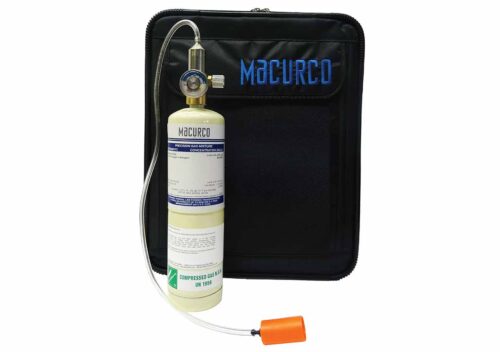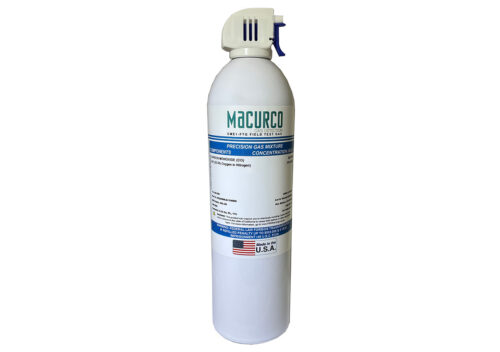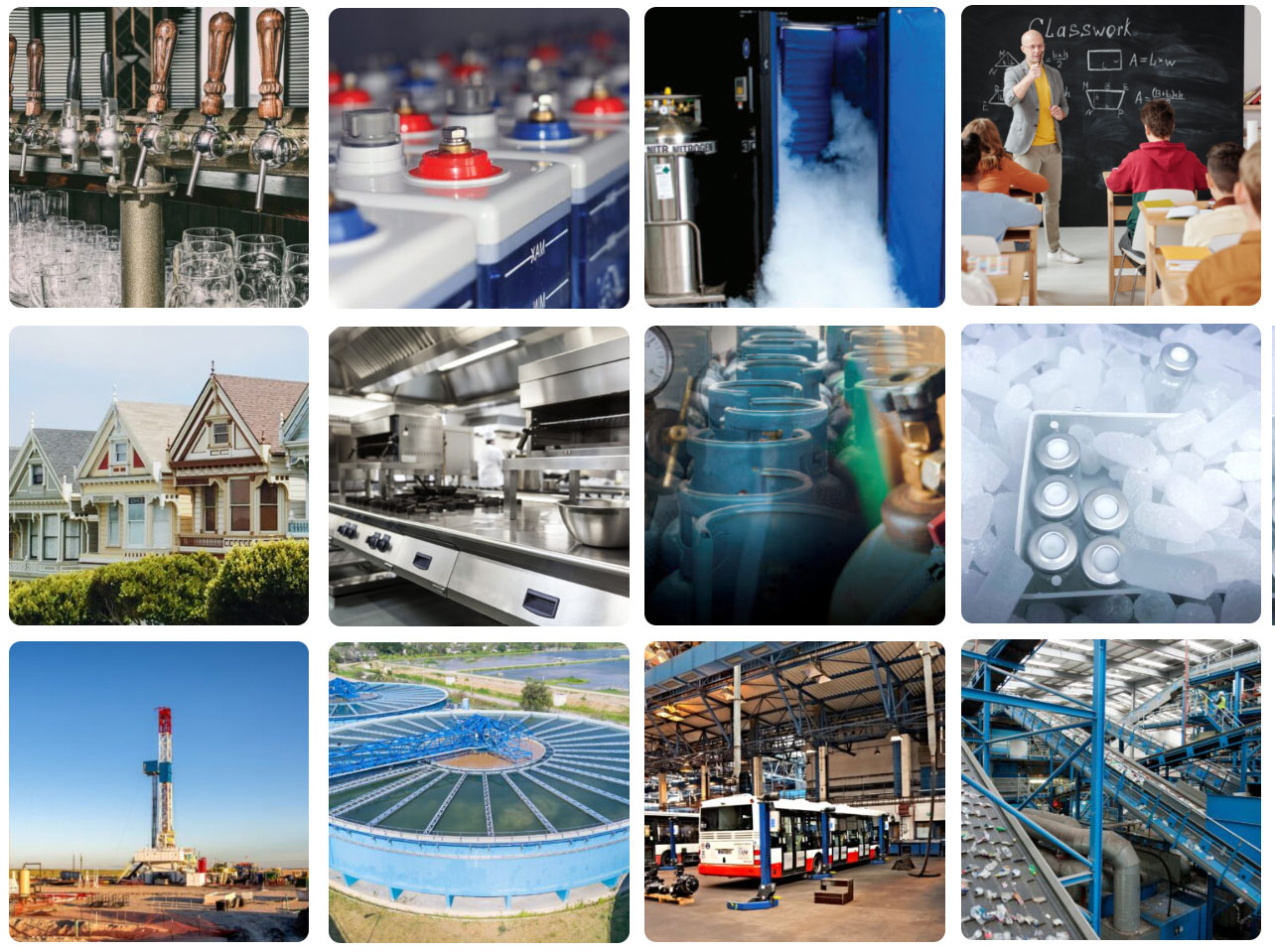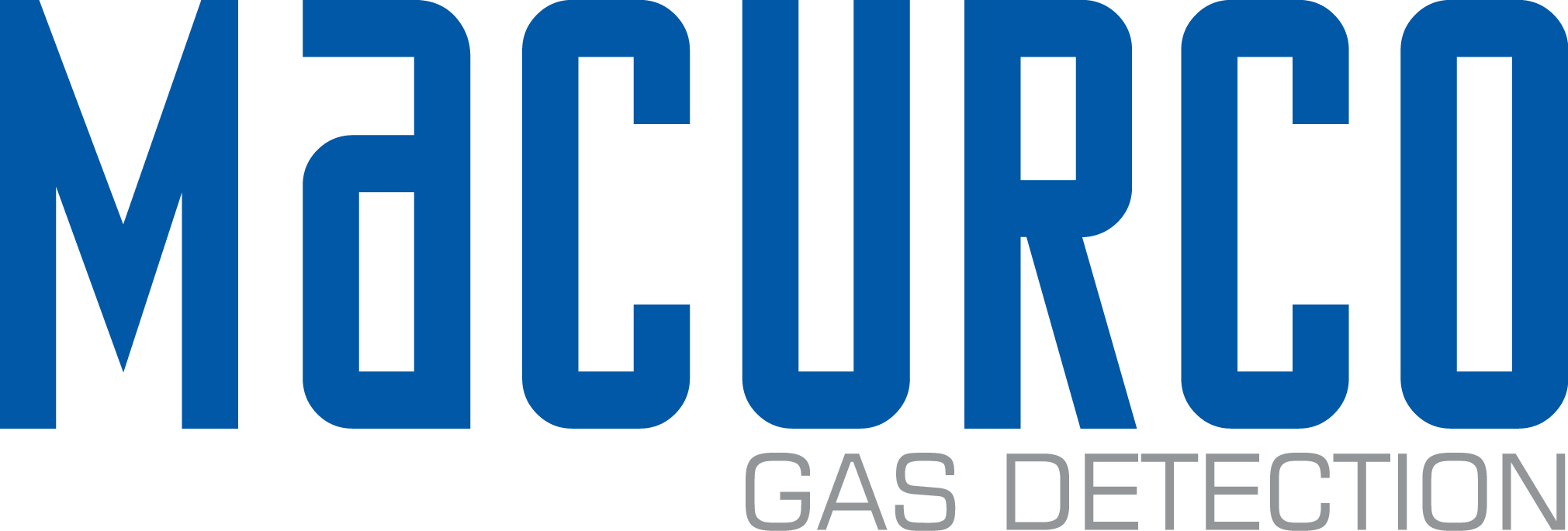
Gas Detector Calibration
Calibrating a gas detector is critical to ensure its accuracy and reliability in detecting potentially harmful gases in various environments. Macurco recommends testing and calibration at least once per year at a minimum, but depending on the application and risk potential of the application, a greater frequency might be needed. Check with local authorities for any specific local regulations. Calibration of our gas detectors will only take a few minutes; we also have an in-house tech support team that can talk you through the steps.
Calibration vs. Bump Tests
Calibration – Gas calibration is the process of exposing a sensor to a target gas at a specific concentration and then adjusting the gas detector to read that gas concentration properly.
Bump Test – A bump test is a very brief exposure of a monitor to a gas to help verify that the sensors respond and the alarms are functioning – bump tests do not measure the instrument’s accuracy; more importantly, it gives the user confidence in its ability to recognize and respond when a hazard is present
Here are several reasons why calibrating a gas detector is important:
Why Calibration is Crucial
- Accuracy Assurance: Gas detectors are used to identify and measure the presence and concentration of gases, often hazardous ones. Calibration ensures that the readings provided by the detector are accurate and correspond to actual gas concentrations.
- Safety: In settings where gases can jeopardize health and safety, such as industrial facilities, laboratories, and confined spaces, a properly calibrated gas detector can issue timely warnings, enabling individuals to take necessary precautions or evacuate as needed.
- Compliance: Many industries have regulatory standards and safety protocols that mandate regular calibration of gas detectors. Compliance with these standards ensures workplace safety and may be a legal requirement.
- Reliability: Calibration helps maintain the reliability of the gas detector over time. Environmental factors, exposure to certain gases, and normal wear and tear can affect the detector’s accuracy. Regular calibration helps to identify and address any discrepancies.
- Quality Control: In industrial processes or laboratory settings where gas concentrations impact product quality, calibration ensures that gas levels are monitored accurately, maintaining the quality of the final product.
- Peace of Mind: Regular calibration provides users with peace of mind, assuring them that the gas detector is functioning correctly and delivering accurate readings in critical situations.
- Data Integrity: Calibrated gas detectors provide reliable data for analysis and decision-making. Accurate data is essential for trend analysis, risk assessment, or process optimization.
Macurco 6 & 12 Series Gas Detection Calibration Video
Misconceptions About Calibrating Gas Monitors
- Unfortunately for the industry, there are dangerous rumors that suggest industry-standard maintenance recommendations are unnecessary and manufacturer recommendations are just a tactic to sell calibration gas.Several misconceptions exist about gas calibration that can lead to confusion or misunderstandings. Here are a few:
- “Calibration is a One-Time Task”: Some people believe that if they calibrate a gas detector or other instrument once, it will last forever, but this is not the case. Calibration is a continuous process, and the instrument’s accuracy can change over time due to environmental conditions, use, and the aging of components. Therefore, it is important to recalibrate the instrument on a regular basis.
- “Calibration Equals Adjustment”: Calibration is the process of verifying and adjusting the data of a device to meet accepted standards. Not all calibration needs to be changed; sometimes, it is enough to confirm that the device is within an acceptable range and requires no adjustments.
- “One Gas Fits All”: Assuming that using a single calibration gas across different types of detectors or gases is accurate can be misleading. Every gas detector is built to measure different gases, and calibration means using the right gas for that particular detector and gas type.
- “Calibration Equals Repair”: When a gas detector displays inaccurate readings, the assumption might be that calibration alone will fix the issue. While calibration addresses accuracy, malfunctioning sensors or other mechanical problems might require repairs beyond standard calibration procedures.
- “Self-Calibrating Means No External Checks Needed”: While some devices claim to be self-calibrating, periodic external calibration against known standards remains crucial to validate and ensure accuracy despite any internal checks these devices might perform.
- “Calibration Erases Drifts Permanently”: Although calibration corrects instrument drifts, it does not permanently eliminate them. Instruments can still experience drift over time, so regular calibration checks are necessary to maintain accuracy.
- “Calibration Guarantees Perfect Accuracy Forever”: Even after calibration, there might be slight deviations in readings due to various factors. Regular checks, maintenance, and recalibration are necessary to ensure accuracy over time.
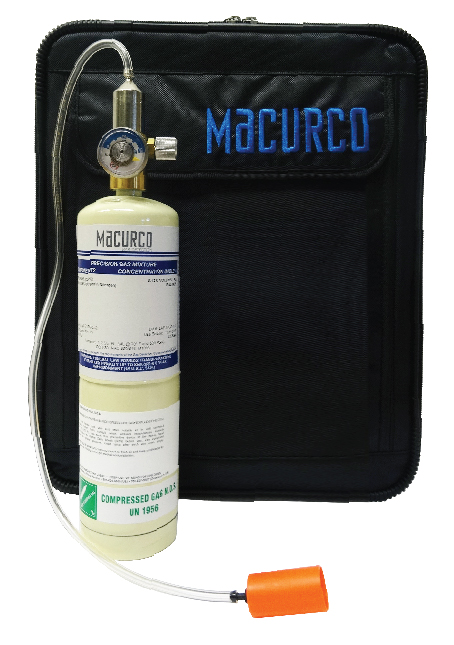
Cal-Kits come with a calibration case, Tygon Tubing (2’), Cal Hood Pack, and a 0.2LPM Regulator. Must order gas separately.
Tips for Calibration
Share This Article!
Recent Articles
Protected: Hazards of Water/Wastewater Treatment Plants
This content is password protected. To view it please enter your password below: Password:
Gas Detector Calibration
Calibrating a gas detector is critical to ensure its accuracy and reliability in detecting potentially harmful gases in various environments. At Macurco, we recommend yearly calibration on all the gas monitors we manufacture.
Subscribe for Updates
"*" indicates required fields

